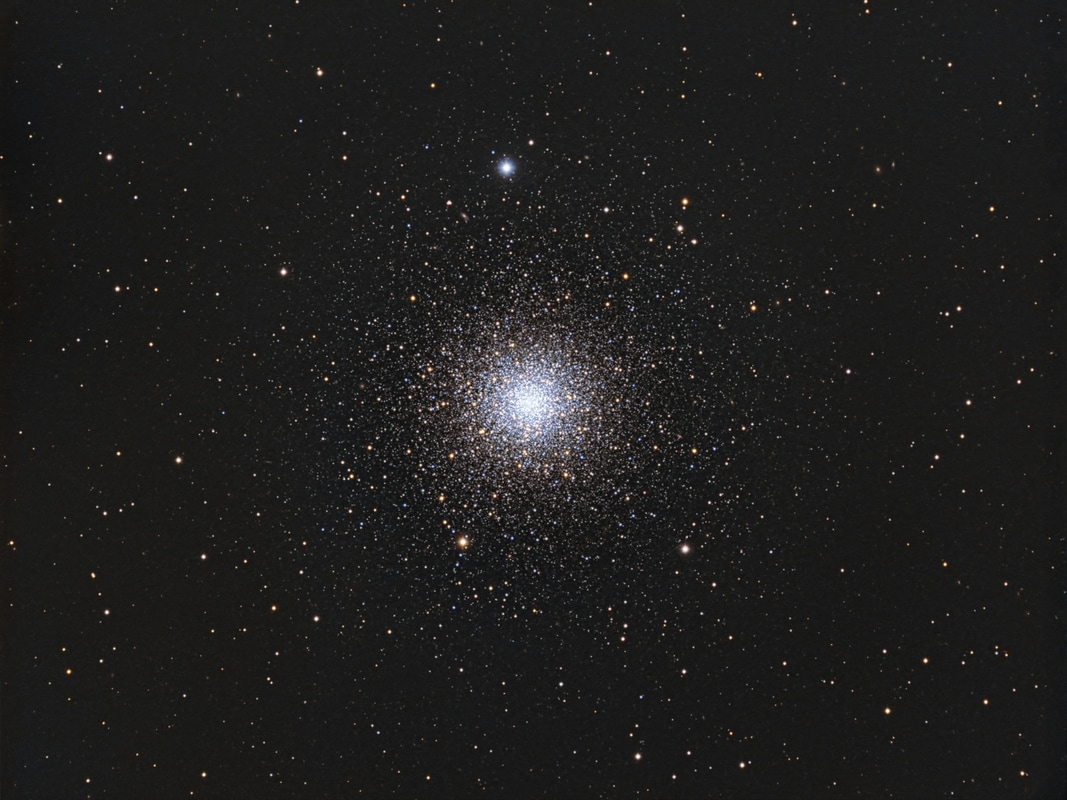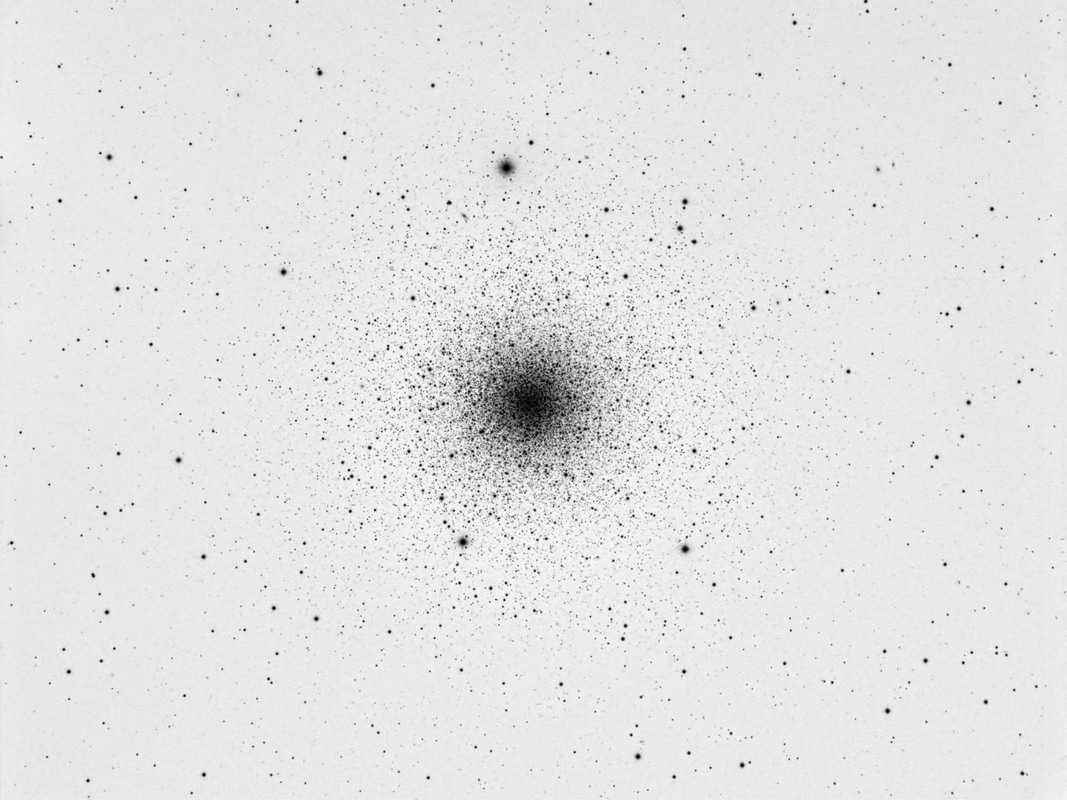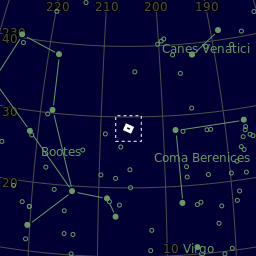M3 - Globular cluster
|
Details.
M: Mesu 200 T: TMB 152/1200 C: QSI683 Baader LRGB filters 30x600s Luminance 30x600s Red 30x600s Green 30x600s Blue Totalling 20 hours. This was all taken as well during the full moon period, as Globular clusters are less affected by moonlight than other Deep Sky objects. |
Messier 3 (M3 or NGC 5272) is a globular cluster of stars in the northern constellation of Canes Venatici. It was discovered by Charles Messier on May 3, 1764, and resolved into stars by William Herschel around 1784.
This cluster is one of the largest and brightest, and is made up of around 500,000 stars. It is estimated to be 8 billion years old. It is located at a distance of about 33,900 light-years away from Earth. A globular cluster is a spherical collection of stars that orbits a galactic core as as satellite. Globular clusters are very tightly bound by gravity, which gives them their spherical shapes and relatively high stellar densities toward their centres. |



